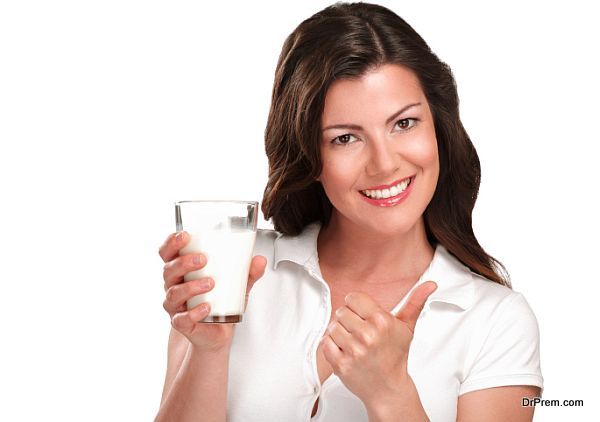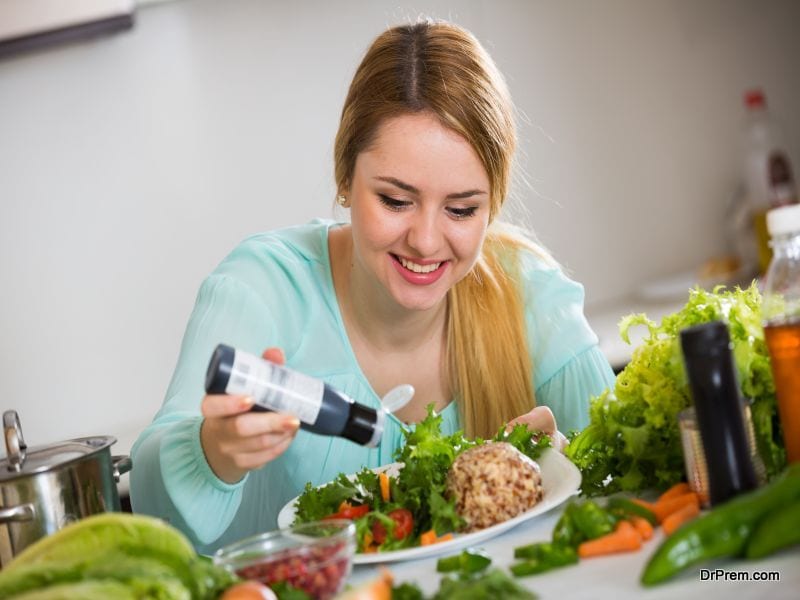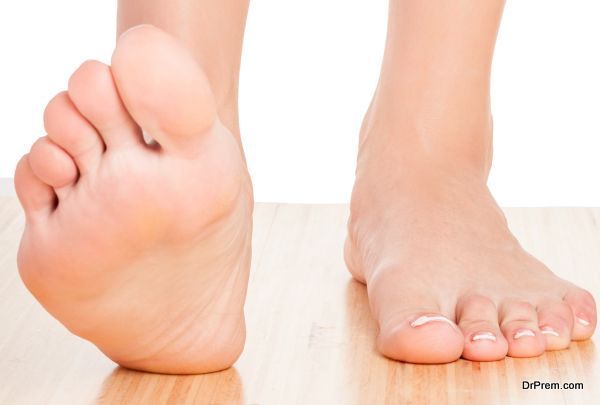Hot and cold foods cited in Ayurvedic diet have nothing to do with the temperature but its impact on our body. Ayurveda, the 5000-year-old texted traditional medicine in India considers food as the most effective medicine that should be consumed in accordance with the individual’s body type.
The philosophy of Ayurvedic medicine rests on three ‘doshas’ or energy known as Vata, Kapha and Pitta that dominate the state of human body and mind. Every individual possesses a unique mix of three doshas with one or two dominant doshas. The diet should be planned to maintain an optimal equilibrium of all the three doshas or energy states.
Hot and cold foods in Ayurveda:
 Ayurveda identifies certain properties of food based on its nutrient content like Rasa (taste), Virya (power or potency) and Vipaka (digestive action). It is the potency of food that determines the coldness and hotness of foods in the Ayurvedic diet.
Ayurveda identifies certain properties of food based on its nutrient content like Rasa (taste), Virya (power or potency) and Vipaka (digestive action). It is the potency of food that determines the coldness and hotness of foods in the Ayurvedic diet.
Foods having a heating effect on our body after consumption are termed as ‘hot’ foods as they liberate heat in the body, while those having a cooling effect on our body are termed as cold foods as they lower the temperature of the body.
Ayurveda medicine strictly follows the advice of nature. It is the nature that supplies us with cold foods during summer to keep our body cool and hot foods in winter to keep our body hot. The heating and cooling effect of foods play a great role in maintaining good health.
Let us check some of the common hot and cold foods and study their effects.
- Tomatoes, onions, peppers, mustard, ginger, garlic and ghee are commonly termed as hot foods.
- Fruits like apple, oranges and mangoes also come under the category of hot foods.
- Spices like asafetida and ajwain are hot foods that help in relieving cold and flu in winter.
- Melons, coconut, pumpkin, cauliflower, asparagus and many sweet fruits are cold. They help in providing strength and nourishment.
- Banana, strawberries, kiwi, watermelons and apricots are cold foods enjoyable in summer.
- Common dairy products are included among cold foods.
- Hot green tea has a cooling effect on our body and belongs to the cold food category.
Impact of hot foods:

- Enhances digestion and circulation and increases appetite.
- Helps in body cleansing or detoxification
- Gives you a light feeling.
- Excessive consumption often causes inflammation, gastritis, ulcer and rashes.
Impact of cold foods:
- Refreshes our body.
- Helps in body cleansing.
- Restricts our digestive system.
- Gives a feeling of heaviness
Knowing the body type in Ayurvedic diet:
 Before understanding the hot and cold foods, it is important to know the body type guided by Ayurvedic medicine. You need to understand which ‘Dosha’ (Pitta, Vata or Kapha) dominates your body. When doshas or energies are balanced, people remain healthy. Any unbalance in the energies gets manifested in the form of disease and ailments.
Before understanding the hot and cold foods, it is important to know the body type guided by Ayurvedic medicine. You need to understand which ‘Dosha’ (Pitta, Vata or Kapha) dominates your body. When doshas or energies are balanced, people remain healthy. Any unbalance in the energies gets manifested in the form of disease and ailments.
The combination of Doshas in every individual gets reflected in their physique, emotional behavior and mental attitude cumulatively known as ‘Prakruti’ or nature. Therefore, knowing self-attributes and constitution would help us better in making the right balance of hot and cold foods.
For example, the ‘pitta’ dosha is composed of fire and water. Individuals with dominant ‘pitta’ has the hot attribute. Therefore, if they consume excessive hot foods like chilli, garlic and peppers, it would lead to excessive heating of the body leading to rash, inflammation etc.
On the other hand, Vata and Kapha are cold attributes. Overconsumption of cold foods will make you feel heavy and cause constipation, hypertension, sluggish bowel movements etc. But this also does not mean that you will have to consume excessive hot foods to stabilize your Vata or Kapha attribute.
If you consume foods opposite to your attributes more, those will become your dominant Dosha. This means your vata or kapha attribute will get suppressed and pitta will become dominant. The objective is to work with nature and not against it and you will have to carefully balance the consumption of hot and cold foods.
Knowing your Dosha or attribute:
 Studying our cravings towards certain foods often helps us to identify our body type. For example, an individual with a mixed pitta-vata attribute is likely to crave for hot and spicy delights in winter months. We need to understand our body well which in turn would help in developing a harmonious relationship with nature.
Studying our cravings towards certain foods often helps us to identify our body type. For example, an individual with a mixed pitta-vata attribute is likely to crave for hot and spicy delights in winter months. We need to understand our body well which in turn would help in developing a harmonious relationship with nature.
The following characteristics may help you in providing a rough assessment of your doshas.
Vata:
Physical characteristics:

- Lightly built with good adaptability.
- Show frequent bursts of energy.
- Dry skin
- Cold hands and feet
- Sensitive digestive system
- Prone to weight loss, constipation, arthritis, weakness
Emotional characteristics:

- Loves excitement and new adventures.
- Short tempered but forgiving nature.
- Creative and energetic.
When imbalanced, individuals with the ‘vata’ attribute show worry, nervousness, and anxiousness and suffer from sleeplessness.
Favorable foods:

Ginger, garlic, cloves, cumin, cinnamon, cardamom and cinnamon are favorable for them. A reduced intake of iced drinks, salads, caffeine and unripe fruits is recommended.
Pitta:
Physical characteristics:

- Highly energetic
- Strong appetite
- Gets sound sleep
- Excellent digestive system
- Warm body temperature
Emotional characteristics:

- Strong intellect
- High concentration levels
- They make good speakers, teachers and are efficient decision-makers
- Sharp-witted and outspoken
- Ambitious but practical
- Enjoys taking challenges.
In the imbalanced state, they may be short-tempered and argumentative and show emotional outbursts.
Favorable foods:
 Individuals with dominant Pittas should take cool and moderately textured foods. Steaming hot foods are not good for them. Milk, ice-cream, salads and herbal teas are good for them. Vegetarian foods work best with them as they generate less heat and fat.
Individuals with dominant Pittas should take cool and moderately textured foods. Steaming hot foods are not good for them. Milk, ice-cream, salads and herbal teas are good for them. Vegetarian foods work best with them as they generate less heat and fat.
They should avoid butter, fat, cheese, sour cream, coffee, alcoholic and fermented beverages. Hot spices and fried foods are not good for them.
Kapha:
Physical characteristics:

- Heavy bodies with a tendency to retain fluid and store fat.
- Calm nature
- Prefers attachment
- Slow talkers
Emotional characteristics:

- Calm natured and thoughtful
- Ability to enjoy life to the fullest and are comfortable with the day to day routine
- Loyal, patient, strong and steady
- Fond of music and reading.
When in the imbalanced state, they have a tendency to hold on to things. They become stubborn and resist change.
Favorable foods:
 Light, dry and warm foods are favorable for ‘Kapha’ dominated individuals. Lightly cooked raw vegetables are best for them. Spicy Indian and Mexican goods are good for them in winter. Cumin, fenugreek, turmeric and sesame seeds are suitable for them.
Light, dry and warm foods are favorable for ‘Kapha’ dominated individuals. Lightly cooked raw vegetables are best for them. Spicy Indian and Mexican goods are good for them in winter. Cumin, fenugreek, turmeric and sesame seeds are suitable for them.
However, they should limit the intake of sweet and fatty foods. Salt consumption should be low to prevent fluid retention. Deep-fried foods are also not recommended. Ghee and oil should be used minimally.
Creating compatibility with nature:
 In the end, it is the balanced consumption of hot and cold foods that matters most. We need to pay attention to what we eat and observe how seasonal changes affect our attributes and eating habits. When we interact with the food understanding its constituents and its effects, we gradually build a compatible relationship with nature.
In the end, it is the balanced consumption of hot and cold foods that matters most. We need to pay attention to what we eat and observe how seasonal changes affect our attributes and eating habits. When we interact with the food understanding its constituents and its effects, we gradually build a compatible relationship with nature.




